Types of Valves Used in HVAC Systems: Explore Now

What is Valve?
Valves are important components of your HVAC system. They help regulate the flow of air that is either entering or leaving your home. But what are the different types of HVAC valves and how do they work? There are many HVAC valves on the market and it can be difficult to make a choice.
However, BASO and Taco are the most well-known manufacturers who produce them. They have been around for a very long time and are very reliable.
Regardless of the type of valve, all valves have a few basic parts in common. The major pressure boundary of a valve is the valve body, often known as the shell. Being the framework that keeps the entire valve assembly together. Read on to find out more about these valves and how they influence your HVAC system's performance.
Table of Contents:
What is an HVAC system?
If you want to learn how HVAC systems work, you should first understand what they are. The mechanical systems that offer thermal comfort and air quality in a room or indoor space are all connected and collectively referred to as HVAC systems. It includes packaged units, rooftop units, air conditioners, heat pumps, boilers, and furnaces.
How are valves used in the food industry?
Valves are an important part of the food industry because they ensure that the food is cooked and processed properly. Valves in the food industry come in many different shapes, sizes, and materials. They can be found in Ice Machines, Fryers, Griddles, Ovens, and Dishwashers.
With PartsFe, our online store for food equipment parts, you can find parts and accessories for commercial kitchens from major brands like Cleveland, Vulcan Hurt, Garland, Hobart, Southbend, and many others. We carry a range of commercial cooking equipment parts, replacement parts, and accessories such as control boards, motors, valves, and more.
The most commonly used valves in commercial kitchen equipment are Solenoid Valve, Gas Valve, Safety Valve, Pressure Reducing Valve, Check Valve, Ball Valve, Water Valve, Purge Valve, Expansion Valve, Float Valve, etc. Pitco, Star Mfg, and Groen are the major manufacturers that produce these valves.
Types of Valves in your HVAC System
HVAC valves are used to regulate pipe flow. Valves are used to regulate the flow of water, gas, and air in major HVAC system components such as water chillers, cooling water pumps, air handling units, and fan coil units.
What is a Valve body? Given below are the different types of valves used in HVAC Systems:
Top Selling Products
Gas valve
Gas valves are devices that control the flow of gas. They are responsible for regulating the amount of gas that is going to flow in a certain direction. Gas valves are used in almost all HVAC systems. They come in different shapes and sizes, but they all serve the same purpose: to regulate the flow of gas.
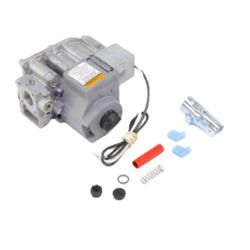
Furnace Gas Valve
A furnace gas valve is a part of the fuel system for your furnace. The furnace's gas valve opens and closes to let gas flow to the burner and pilot light (s). Only gas-powered boilers and forced air furnaces have furnace gas valves.
Honeywell is the world's largest manufacturer of gas valves, gas appliances, and specialty gases. Honeywell Gas Valves are made of high-quality materials and are tested to ensure that they are safe.
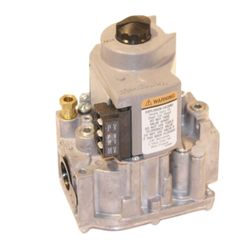
-
How much does it cost to replace the gas valve on the furnace?
The price to replace the gas valve in your furnace might range from $300 to $750. This applies to both the component itself and the expert HVAC services.
Depending on the manufacturer, the valve's price might range from $90 to the mid-$200 range on the high end. You can benefit from labour cost savings, but only if you are careful when working with an expensive and sometimes dangerous home system. In other words, if you want to complete this project yourself, use caution!
Visit PartsHnC, if you're looking for trustworthy pricing. We provide HVAC parts and accessories from reputable manufacturers such as Lars, Honeywell, etc.
Reversing valve
A heat pump reversing valve, a particular kind of valve, is a part that alters the refrigerant flow's direction. The refrigeration cycle of a heat pump can be switched from cooling to heating or vice versa by reversing the flow of refrigerant. As a result, a home or building can be heated and cooled using the same method and technology, all from a single piece of equipment.
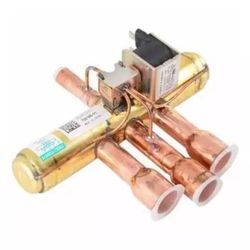
-
What is the most common problem with reversing valves?
One of the most frequent issues with reversing valves is that they can get stuck in one mode or while switching between modes. This can be a safety issue if it stays in the wrong position and will usually require maintenance to fix. When the valve is stuck, it’s difficult to know what is happening on that side of the valve and if there is any air escaping.
Expansion valve
Expansion valves are used to regulate the flow of refrigerant. They aid in the transition of the condensing unit's higher pressure liquid refrigerant to the evaporator's lower pressure gas refrigerant. AC expansion valve and thermal expansion valve are the most commonly used expansion valves in HVAC Systems.
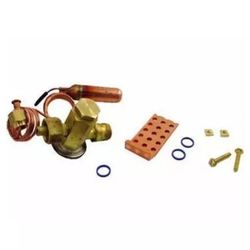
-
AC Expansion Valve:
AC expansion valves regulate the flow of refrigerant gas and control the temperature of the air in a room. They also regulate the pressure in a system. They are used in many modern air conditioners to control and maintain a constant temperature.
-
Thermal Expansion Valve:
Thermal expansion valves are devices that control the flow of fluids in a closed system. They are used to regulate pressure in the system and maintain a constant temperature.
Thermal expansion valves work by opening and closing as the pressure and temperature change. When the temperature increases, it will open to allow more fluid to flow through it. When the temperature decreases, it will close to restrict fluid flow and increase pressure in the system.
-
What causes expansion valve failure?
The most common cause of expansion valve failure is when there are leaks in the system. This can happen due to corrosion or physical damage from an accident. Expansion valves can also fail when they are not designed for the correct operating temperature or pressure range or if they are not built with quality materials.
Pneumatic Valve
When compressed gas or air is used instead of air, the pneumatics system operates by using the difference in pressure. The flow in this structure is managed, distributed, and directed via valves. The locking and regulating components act as a guide and dosing mechanism. Pneumatic valves act as an intermediary between sources (compressors) and actuators (actuators, cylinders, and others) in pneumatics.
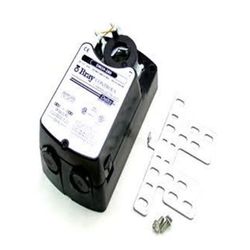
Relief Valve
Relief valves are also referred to as pressure relief valves, water heater pressure relief valves, and T & P valves. What is the purpose of the relief valve? Devices called relief valves or pressure relief valves open and shut when the pressure inside a fluid system rises too high. They consist of diaphragms or balls that seal orifices. The spring-loaded device has an adjustable housing and is attached to it.
The relief valve's set-pressure limit rises as the pressure on the spring increases. Both standard and proportional pressure relief valves are available. The conventional valve's spring-loaded portion is often found on top of the vessel. The latter is utilized when a structure requires a refrigerant vent. While neither of these works well in every environment, they work well in commercial and industrial situations.
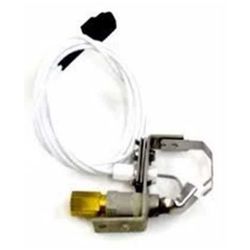
Solenoid Valve
A solenoid valve is a valve that is electrically controlled. The valve has a solenoid, which is an electric coil with a rotating ferromagnetic core (plunger) in the middle. The plunger seals off a tiny opening when it is in the rest position. The coil produces a magnetic field when an electric current flows through it. The orifice is opened by the plunger being pulled upward by the magnetic field. Solenoid valves operate on this fundamental idea in order to open and close.
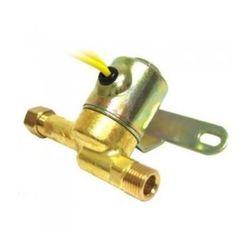
Water Valve
Throughout pipelines and plumbing fixtures, water valves control the flow and temperature of the water. When properly placed and used, valves maintain steady flow and volume. Brass, plastic, stainless steel, bronze, cast iron, and galvanized pipe are among the materials used to make water valves.
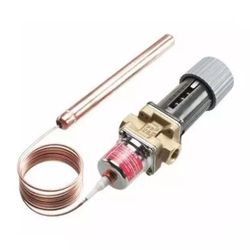
Propane Gas Valve
Propane gas valves are the part that allows propane gas to flow from a tank to the burner. The valve is controlled by a valve operator which is typically a solenoid or relay. The HVAC system requires a propane gas valve for heating, cooling, and water heating systems. The valve operator will open and close the propane gas valve according to the settings of the thermostat and control board.
Thermostatic Expansion Valve
Thermostatic expansion valves are used in heating and cooling systems. They control the flow of refrigerant to the indoor coil. They are temperature-sensitive devices that open and close as per the change in temperature.
The thermostatic expansion valve is a device installed between the compressor and the condenser coil in an HVAC system. The valve is sensitive to changes in temperature and opens or closes accordingly to regulate the refrigerant flow into or out of a system, thus maintaining a set point temperature.
The valve can be either manual or automatic depending on its type. Manual valves are usually used when there is only one indoor unit, while automatic valves are used when there are multiple units in a building.
-
How does a thermostatic expansion valve reduce temperature?
The thermostatic expansion valve is a device which is used to regulate the temperature of the water in a hot water tank. It does this by monitoring the temperature of the incoming water and then opening or closing its valve to maintain the desired temperature.
Thermostatic expansion valves are composed of two parts: an expansion tank and a thermostat. When cold water enters, it enters through an inlet pipe and flows into a pump. The pump raises the pressure on this cold water so that it can flow through a series of pipes, cooling it as it goes. This cooled water then passes through an expansion tank, where air is pumped in to cool down even more before flowing back into the hot water tank. The thermostat monitors the temperature inside this heated reservoir and opens or closes its valve accordingly based on what you want your hot water to be at.
Pilot Valve
A pilot valve is a type of valve that regulates the flow of gas or liquid by opening and closing. Pilot valves are typically used in heating, ventilation, and air conditioning systems to regulate the flow of gas or liquid to a burner or heater.
These valves are often found in residential heating systems where they control the flow of natural gas from either a storage tank or pipeline into your home. They also work in HVAC systems where they regulate the flow of water from your water heater into your home’s radiators which then heats up and distributes heat throughout your house.
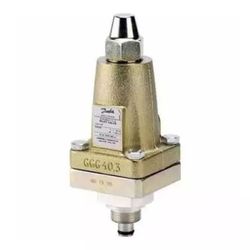
What is the difference between a pilot valve and a solenoid valve?
Pilot valves are used to control the flow of fluid in a system. They are often used in heating and cooling systems, where they are used to regulate the flow of fluid. Solenoid valves, on the other hand, are electromechanical devices that use an electric current to control a valve opening or closing. They are often used where you want to control the flow of fluid in a system without any mechanical parts.
Ball Valve or Stop Valve
A stop valve is a type of valve that controls the flow of fluid through a pipe. It is also called a ball valve, gate valve, or plug valve. If you have ever turned off the water in your house with a handle on the sink, you have used a stop valve.
The function of this type of valve is to stop and start the flow of liquid through pipes by opening and closing. A stop valve can be opened or closed manually by turning the handle, but they are usually controlled automatically by pressure or temperature sensors.
Ball valves can be the solution if you're seeking a means to reduce your energy bills. These gadgets are employed in numerous applications, such as refrigeration and HVAC systems. Ball valves, despite their name, are not only tiny but also light. Additionally, they are perfect for usage in non-critical systems.
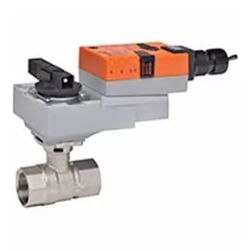
-
How to replace a ball valve?
Ball valves are not easy to replace so it is important that you have the right tools and know what you're doing before attempting this task.
The first thing you need to do is turn off your HVAC system and then disconnect it from your home's plumbing supply line. Next, disconnect any pipes that may be connected to your valve. The next step is removing any screws that may be holding it in place and then using a flathead screwdriver to remove the valve from its seating area. Once this is done, make sure that any debris has been removed from inside your valve housing before installing a new one.
In conclusion, valves are a vital component of any HVAC system. The above-listed HVAC valves are different types of valves used in different HVAC Systems.
Replace your Valve when it is worn and has reached its end of life. PartsHnC is your best source on HVAC valves to find the right replacement. We carry only quality HVAC parts from brands that are affordable and provide same-day shipping. We also carry many different HVAC parts like valves, regulators, heat exchangers, and more. Browse our inventory and find the parts you need today.












